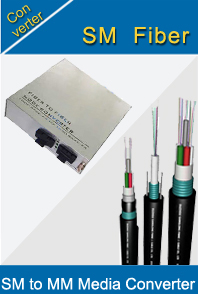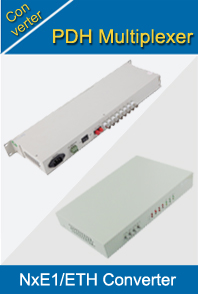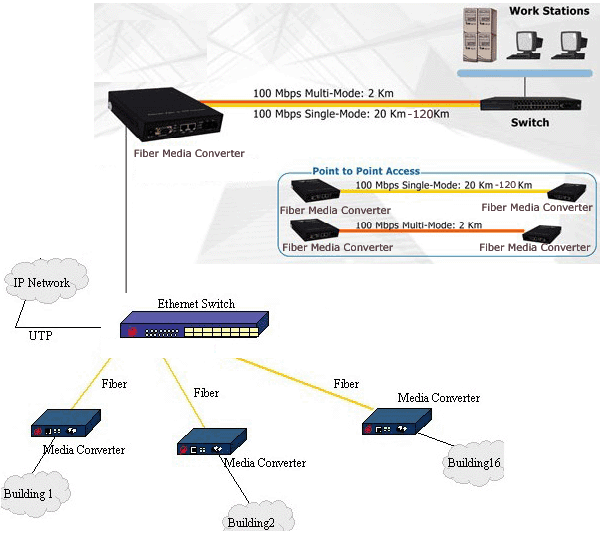-

- Sopto Home
-

- Special Topic
-

- Converter Knowledge
-

- Devices Can Communicate Directly with a Protocol Converter
Converter Knowledge
- Form Factors and Application of Ethernet Media Converter
- Ethernet over 4 E1 Converter Brief Introduction
- What is the Difference between RS232 and RS485 Serial Interfaces
- What is the Difference between RS232 and RS485 Serial Interfaces
- How to Convert an Analog Telephone to VoIP Protocol?
- How to Find the Internet Protocol Address and Media Access Contr
- How to Convert from Fast Ethernet to Fiber Optics?
- How to Connect a Fiber Converter?
- How to Convert Ethernet to Fiber Media Converters?
SOPTO Special Topic
Certificate



Guarantee
Except products belongs to Bargain Shop section, all products are warranted by SOPTO only to purchasers for resale or for use in business or original equipment manufacturer, against defects in workmanship or materials under normal use (consumables, normal tear and wear excluded) for one year after date of purchase from SOPTO, unless otherwise stated...
Return Policies
Defective products will be accepted for exchange, at our discretion, within 14 days from receipt. Buyer might be requested to return the defective products to SOPTO for verification or authorized service location, as SOPTO designated, shipping costs prepaid. .....
Applications
An Ethernet to Fiber Media Converter can also be used where there is high level of electromagnetic interference or EMI which is a common phenomenon found in industrial plants. This interference can cause corruption of data over copper-based ethernet links. Data transmitted over fiber optic cable however is completely immune to this type of noise. An Ethernet to Fiber Optic Converter therefore enables you to inter-connect your copper-ethernet devices over fiber ensuring optimal data transmission across the plant floor.
SOPTO Products
- Fiber Optic Transceiver Module
- High Speed Cable
- Fiber Optical Cable
- Fiber Optical Patch Cords
- Splitter CWDM DWDM
- PON Solution
- FTTH Box ODF Closure
- PCI-E Network Card
- Network Cables
- Fiber Optical Adapter
- Fiber Optical Attenuator
- Fiber Media Converter
- PDH Multiplexers
- Protocol Converter
- Digital Video Multiplexer
- Fiber Optical Tools
- Compatible
Related Products
Performance Feature
Converter Knowledge
Recommended


Devices Can Communicate Directly with a Protocol Converter
Protocols are determined by several factors such as data rate, encryption methods, file and message formats and associated service. A protocol converter is tasked with taking this protocol and changing it to another one, making devices connected across these networks to communicate directly. Protocol converters, much like a language translator, translate messages or data streams between networks, to enable both networks easily interpret the data.
Protocol converter is a highly beneficial device used by various industries in order to convert the proprietary or standard protocol of a device into suitable protocol of other tools or device in order to attain inter compatibility. Within a network, the large number of different machines and there is a possibility that different machines will run on different protocols.
This can make work difficult, because most protocols are inherently incompatible with one another, thus preventing machines with different protocols from integrating. By using a protocol converter, users can bypass this difficulty by changing the protocol, which allows the different machines to work together — as long as the converter supports the protocols of each machine.
The most attractive benefit of the protocol converter is that the users can carry out the networking and serial communication without even bothering about the programming performed at the hardware level. Without the need of any additional programming for the end user, the protocol converter manages well to transmit the transparent data along the channel which connects a combination of two communication ports. Another key feature of the protocol converter is that of being a programmable driver.
Most protocol converter units are programmed to understand a handful of different protocols, and these units use an internal database to track all the protocols. This database will store all the factors associated with the known protocols, and the database also is tasked with helping this device understand what needs to be changed to alter one protocol to another. Unlike regular databases, which can be manually updated, this database typically is locked from users.
Typical types of protocol converters include E1 to Ethernet, V.35 to Ethernet and E1 to V.35.
.jpg)
The E1 protocol converter is used to convert E1 signal to 10/100Base-T Ethernet signal, and vice versa. It extends the bandwidth to 7.68Mbps. It can be used in two LAN connection, remote monitor or video broadcasting.
E1 to V.35 protocol converter realizes the bi-directional data transfer from E1 port to V. 35 network. This equipment is used in communication network including WAN and LAN, realizing the transfer from E1 channel of SDH or PDH equipment to V.35, which maybe provided by routers.
V.35 to Ethernet Protocol Converter accomplishes the converting between the 10/100M Ethernet port and the V. 35 port. It provides at most bandwidth N*64kbps data transmission channel for Ethernet through V. 35 Lines. It is suitable for many situations, such as increasing the range of LAN, founding a special Ethernet network, and so on.
The protocol converters have the capacity to support the Modbus ASCII, Modbus RTU, Modbus TCP and the RFC-2217, E1, Ethernet, V.35, RS232, RS422 and beyond. There are protocol converters that even allow great solution developers the ability to add the proprietary applications and protocols. Also there are converters like RS422 converter and RS232 converter available.
For more info, please browse our website. For purchasing protocol converters, please contact a Sopto representative by calling 86-755-36946668, or by sending an email to info@sopto.com.




